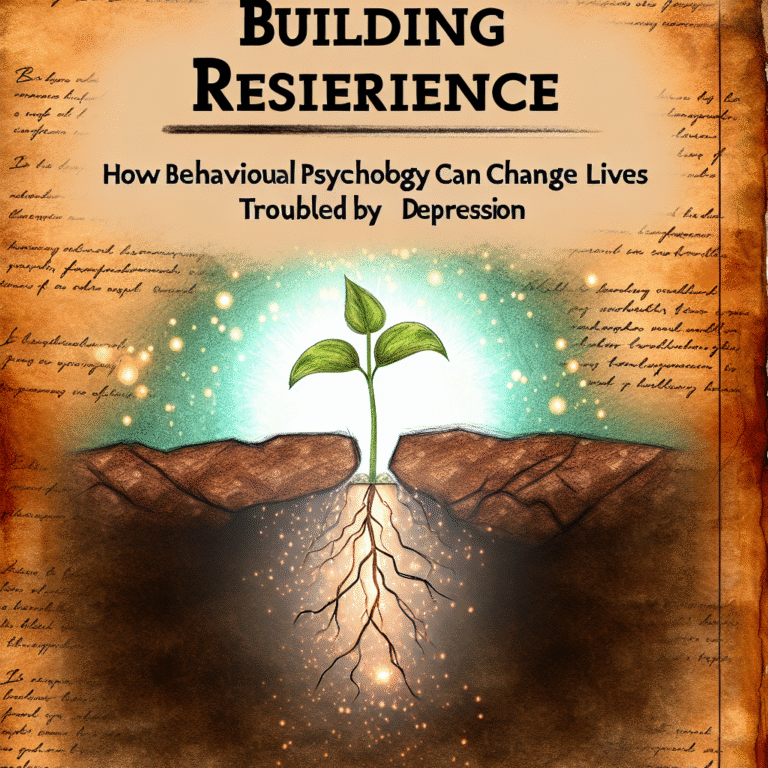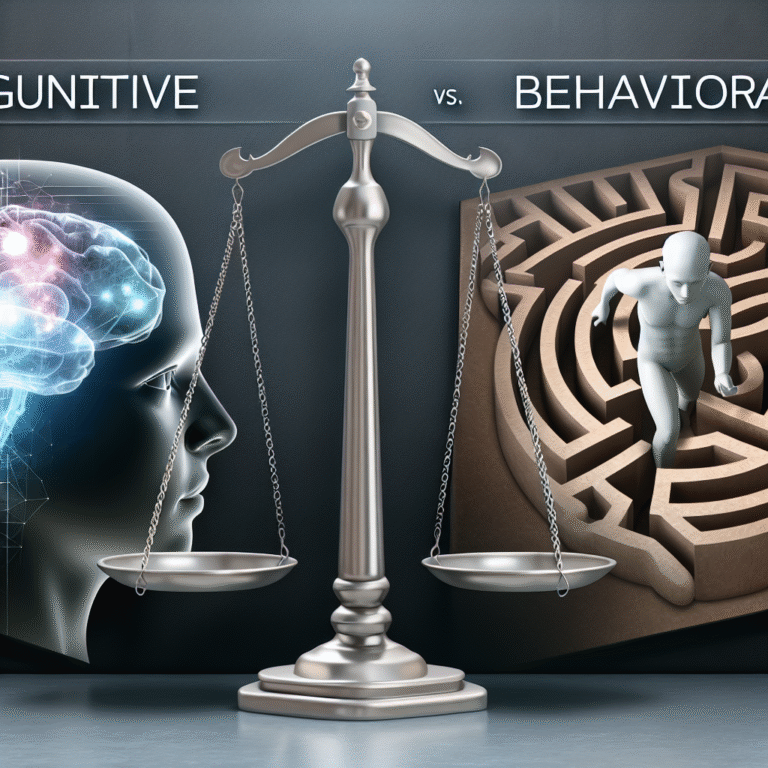
From Pavlov to Skinner: The Ultimate Deep Dive into Classic Learning Theories in Psychology
Introduction
Imagine walking into a room where a bell rings, and immediately, a dog begins to salivate. This is not merely a scene from a cartoon, but a groundbreaking experiment by Ivan Pavlov that laid the foundation for understanding learning in psychology. The journey from Pavlov to Skinner introduces us to a world of learning theories that revolutionized our understanding of behavior and cognition. By delving into these classic learning theories—behaviorism, conditioning, reinforcement, and beyond—we can better grasp their applications in education, therapy, and everyday life. In this article, "From Pavlov to Skinner: A Deep Dive into Classic Learning Theories in Psychology," we will explore the historical context, key figures, essential concepts, and real-world applications of these theories.
The Historical Context
Classical Conditioning: Pavlov’s Experiment
Ivan Pavlov, a Russian physiologist, introduced the concept of classical conditioning in the early 20th century. His experiments with dogs revealed how a neutral stimulus, when paired repeatedly with an unconditioned stimulus, can elicit a conditioned response.
Table 1: The Basics of Classical Conditioning
| Term | Definition |
|---|---|
| Unconditioned Stimulus (US) | A stimulus that naturally elicits a response (e.g., food) |
| Conditioned Stimulus (CS) | A previously neutral stimulus that comes to trigger a response (e.g., bell) |
| Unconditioned Response (UR) | The natural response to the unconditioned stimulus (e.g., salivation) |
| Conditioned Response (CR) | The learned response to the conditioned stimulus (e.g., salivation in response to the bell) |
Operant Conditioning: Skinner’s Contribution
B.F. Skinner, an American psychologist, built upon Pavlov’s work by introducing operant conditioning. Skinner showed how behavior is shaped by its consequences—reinforcements and punishments.
Chart 1: Key Elements of Operant Conditioning
| Element | Definition | Example |
|---|---|---|
| Reinforcement | Increases the likelihood of a behavior repeating | Giving a dog a treat for sitting |
| Punishment | Decreases the likelihood of a behavior repeating | Scolding a child for misbehaving |
| Positive Reinforcement | Adding a stimulus to increase behavior | Compliments for good grades |
| Negative Reinforcement | Removing a stimulus to increase behavior | Taking away chores when homework is done |
Deep Exploring Classic Learning Theories
The Shift from Passive to Active Learning
The introduction of these learning theories signaled a shift in understanding human behavior. Before Pavlov and Skinner, psychology was dominated by introspection and subjective study. These psychologists brought an empirical and scientifically rigorous approach, making behavior the focal point of study.
Case Study: Application of Classical Conditioning in Advertising
Consider how brands use classical conditioning to create associations with their products. For example, Coca-Cola often pairs its beverages with positive imagery and catchy jingles. Over time, consumers start associating Coke with happiness and enjoyment, demonstrating classical conditioning principles in action.
Analysis: This case shows how Pavlov’s theory extends beyond simple experiments to impact marketing strategies. Understanding these principles can lead to more effective consumer relations.
Operant Conditioning in Education
Skinners’ work applied significantly to educational settings. The understanding that reinforcement can encourage desired behaviors paved the way for modern teaching methods.
Real-World Application
Many educational institutions now use token economies—a system where students earn tokens for good behavior that can be exchanged for rewards. This system incentivizes positive behavior and enhances the learning experience.
Analysis: The operant conditioning framework is critical in creating structured environments where positive behaviors are cultivated and rewarded.
The Interplay Between Classical and Operant Conditioning
While they are distinct theories, classical and operant conditioning can interplay in complex ways. For example, a teacher might use classical conditioning by pairing their classroom environment (CS) with fun activities (US), leading to excitement (CR) when students enter.
The Modern Applications of Classic Learning Theories
Behavioral Therapy and Conditioning
Behavioral therapy employs principles of behaviorism, utilizing both classical and operant conditioning techniques to help individuals modify their behaviors.
Case Study: Systematic Desensitization in Phobia Treatment
A therapist might use systematic desensitization, a technique rooted in classical conditioning, to help clients overcome phobias. For example, a person with a fear of spiders might first learn relaxation techniques (UR) and then be gradually exposed (CS) to images of spiders (CS) while practicing these techniques.
Analysis: This approach showcases how classic learning theories are not just abstract concepts but are central to therapeutic practices that affect real change in people’s lives.
The Role of Neuroscience
Recent advancements in neuroscience provide insights into how learning theories like those from Pavlov and Skinner are manifested in the brain. The study of brain plasticity, reward systems, and neural pathways gives a biological basis for classical and operant conditioning.
The Critique of Classic Learning Theories
Limitations and Criticisms
While Pavlov and Skinner laid critical foundations, their theories have faced criticism for neglecting cognitive processes. Critics argue that behaviorism oversimplifies human experience, ignoring emotions, thoughts, and social contexts.
Towards a More Integrated Approach
Today’s education and therapeutic practices increasingly integrate cognitive psychology with behaviorism, acknowledging both the importance of observable behavior and internal thought processes.
Case Study: The cognitive-behavioral approach in therapy combines behavior alteration methods (like operant conditioning) with cognitive techniques, illustrating a comprehensive understanding of human behavior.
Conclusion
The journey "From Pavlov to Skinner: A Deep Dive into Classic Learning Theories in Psychology" showcases the evolution of how we understand learning and behavior. These theories are not mere academic constructs; they are rooted in our everyday lives and shape our interactions, education, and therapies. As we further our understanding of the interplay between behavior, cognition, and emotion, we can build more effective educational systems and therapeutic practices that speak to the complexities of human nature.
Takeaway Insight
Ultimately, classic learning theories provide vital tools for understanding and shaping behavior. Embracing these concepts can inspire educators, therapists, and individuals to foster environments conducive to learning, growth, and positive behavioral change.
FAQs Section
1. What is classical conditioning?
Classical conditioning is a learning process where a neutral stimulus becomes associated with an unconditioned stimulus, causing a conditioned response.
2. How does operant conditioning differ from classical conditioning?
Operant conditioning relies on the consequences of behavior (reinforcements and punishments) to shape actions, while classical conditioning is based on the association between stimuli.
3. Can classical conditioning be used in real-life situations?
Yes! Classical conditioning is widely used in advertising, therapy, and even parenting strategies, showing its broad applicability in everyday contexts.
4. What are some criticisms of behaviorism?
Critics highlight that behaviorism overlooks the internal mental processes that influence behavior, suggesting a more integrated approach that includes cognition and emotional factors.
5. How can educators apply these learning theories?
Educators can use reinforcement strategies (from operant conditioning) to promote positive behaviors and create engaging learning environments that resonate with students, drawing upon classical conditioning to associate fun learning experiences with the classroom.
By exploring the profound journey from Pavlov to Skinner, we illuminate pivotal theories that shape our understanding of learning and behavior. The insights gleaned from these foundational theories are not only academic; they empower us to foster a better world through improved educational practices and therapeutic techniques.
















